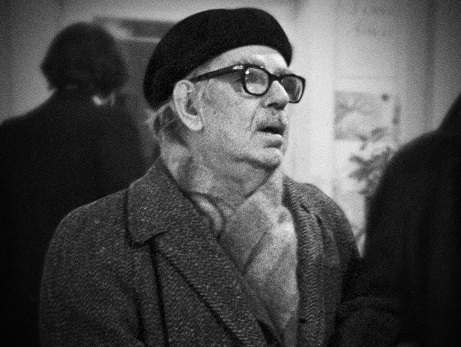Biography
George Constant (Konstantinopoulos), born in Greece in 1892, was orphaned in early childhood, and was raised by uncles, one of whom was a monk at the Monastery of Eleusa, near Patras, from whom he “learned about icons“. Constant, who immigrated to the United States in 1910, said he “had a flair for drawing even in Greece but really turned to art only in the United States,” after reading Dante's Inferno, with its striking illustrations by Gustave Dore. He enrolled in art school in 1912 -among the earliest Greek Americans to do so- first at Washington University in Saint Louis and then, on scholarship, as a student of George Bellows and Charles Hawthorne at the Art Institute of Chicago. In 1918, the year he graduated, Constant's paintings were exhibited in a group show at the Arts Club in Chicago. From then on, his work has been exhibited almost every year up to the present, more than twenty years after his death. By 1998 his work had been in more than fifty solo exhibitions.
Constant's social, historical, and philosophical attitudes were equally significant parts of his artistic mix, as is evident from his early teaching at Jane Adams's Çull House at the hub of Chicago's Greek Town, and from his paintings.”One can get a good sense of this from the many images of close family units whose forms are bound together by intertwining arms, from the tenderness of his renditions of the female figure and men and women in love, and from the themes of the three major series of paintings he worked on over many years: Man as the Builder of Civilization, the Totem series, and In and Out of Time (also called the Space series). He said his intention was “to paint universal and to paint man and woman in a religious form,” and he remarked of the Space series that “its main themes are love and space.“
His work from the 1920s is mostly figurative and often indebted to the School of Paris, although the major influence on his painting for many years was Paul Cezanne. But the drypoints he did during this period, of pear-shaped portrait heads with staring eyes recall the Byzantine icons of his childhood. In the 1930s he came under the influence of the Expressionists and the great Mexican muralists. Like William Baziotes, Theo Hios, and many others, he joined the W.PA. Federal Art and Easel Painting Project during the Depression. In the late 1930s, architectonic forms became the central imagery of his work. His paintings became noticeably more abstract in the mid-1950s, eventually consisting simply of horizontal or vertical ribbons of color, which metamorphosed into the Space series from the late 1950s onward.
“The artist is the rememberer. If he does not remember, who will? The artist must remember that before man crept out of the sea, he crept out of the stars.“
George Constant’s biography is sourced from the catalogue of the exhibition Modern odysseys: Greek American artists of the 20th century (Selz, Peter, and William R. Valerio. 1999. Queens, N.Y.: Queens Museum of Art.)



